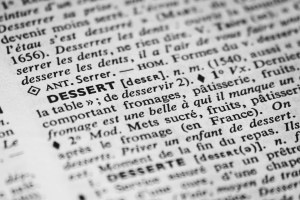It’s Orange-Yellow (Sometimes White) And It’s Square
It’s the stuff that grilled cheese – the diner kind and my childhood favorite – is made of. It’s also the stuff the makes a hamburger a cheeseburger. It melts but sort of stays in place without running all over the pan or the grill. You can get it individually wrapped so it’s portable and, even though it gets soft, it can even sit in a lunchbox or on the car seat and still remain a square.
It’s also sold in blocks – think Velveeta, or in spray cans – think of Easy Cheese in summer camp and college dorms, but the way we see it most is as single slices, individually wrapped or slapped together in a plastic wrapped package of 16 or 32 and upwards.
Processed For Longevity
In 1911 Walter Gerber mixed hot shredded Emmentaler with sodium citrate and discovered a cooled product that took longer to spoil (and oozed potential profit). James L. Kraft made a fortune selling cheese to the US government during the World War 1.
75% of the “cheese” sold in the US is now processed. Processed cheese goes for longevity: it puts self-life before flavor. That’s just one of the technical advantages is has over “real,” unprocessed cheese. It doesn’t separate when you cook with it, and it always tastes and looks the same. It’s cheaper to produce because it’s made from less expensive ingredients.
Heat It Up
Ever get gooey globs when you try to melt cheese? Ever try to make cheese fondue and wonder how restaurants seem to get it nice and smooth (tip: mix the shredded cheese with some cornstarch). Processed cheese makers use emulsifiers to produce cheese that melts smoothly when you cook with it. Prolonged heating causes unprocessed cheese to separate into a bunch of jelly-like protein and liquid fat. Emulsifiers, most often sodium or potassium phosphate, tartrate, or citrate, reduce the tendency of the fat globules in the cheese to coalesce and pool on the surface of hot cheese.
So, because processed cheese doesn’t separate or run off when it’s melted, and it doesn’t change in texture or taste as you heat it – it has become the “go to” for grilled cheese, mac and cheese, nachos, and similar foods.
Why Can’t Those Singles Be Called Plain Old Cheese?
Because of processing and additives, some softer varieties can’t legally be labeled as “cheese” in the US (FDA regulated) so they’re sold as “cheese food”, “cheese spread,” or “cheese product,” based on the amount of cheese, moisture, and milkfat in them.
Processed cheese can be made from a single cheese or a blend of several cheeses along with milkfat, cream, water, salt, artificial color, and spices. Inexpensive milk protein concentrate makes the processed cheese a whole lot cheaper to produce – but begs the question: is it really cheese?
Is It Really Cheese?
Take a good look the next time you’re in the supermarket: as a result of legislation some types of Kraft Singles became “Pasteurized Prepared Cheese Product” instead of “Pasteurized Process Cheese Food,” Velveeta became “Pasteurized Prepared Cheese Product” instead of “Pasteurized Process Cheese Spread,” and Easy Cheese is no longer “Pasteurized Process Cheese Spread” but is a “Pasteurized Cheese Snack.”
American cheese
The best known processed cheese in the US is the uniquely orange, yellow, or white, mild-flavored American cheese. It used to be made from a cheese blend, most often from Colby and Cheddar. Today, American cheese isn’t generally made from a natural cheese blend, but from a manufactured bunch of ingredients such as milk, whey, milk fat, milk protein concentrate, whey protein concentrate, and salt. When substitutes like these are used, the end product doesn’t always meet the legal definition of cheese and has to be labeled differently.
The marketing of “American Cheese” for “processed cheese” coupled with the prevalence of processed cheese in the U.S. has led to the term American cheese being used in the U.S. (and elsewhere) in place of processed cheese.
Some Facts
- Calories in 2% Milk American Singles (1 slice, 19g)
50 Calories, 3g fat (2g saturated), 1g carbs, 4g protein
- Calories in Kraft American Singles (1 slice, 19g)
60 calories, 4.5g fat (2.5f saturated), 1g carbs, 3g protein
- Calories in Free Singles American Nonfat Pasteurized Process Cheese Product (1 slice, 21g)
31 Calories, 0.2g fat (0.1g saturated), 2.5g carbs, 4.8g protein
SocialDieter Tip:
A “pasteurized prepared cheese product” is a long way from nature and nourishment. Just a heads up: We drink about 60% of the milk we did 50 years ago, but we eat almost four times more cheese, an increase from 7.5 pounds to almost 30 pounds a person a year. The increase is probably from the cheese in pizza, processed food, nachos, convenience food, and packaged products – not from good quality cheeses. Each 1 ounce serving of cheese (or 31/2 ounce serving of beef) rmeans a 7 gram increase in saturated fat (the bad kind of fat that, the kind that’s solid at room temperature and directly related to cardiovascular risk factors). Go for reduced fat or 2% cheese when you can. There are fat free cheese slices – okay for sandwiches but not good for heating up – it doesn’t really melt.




